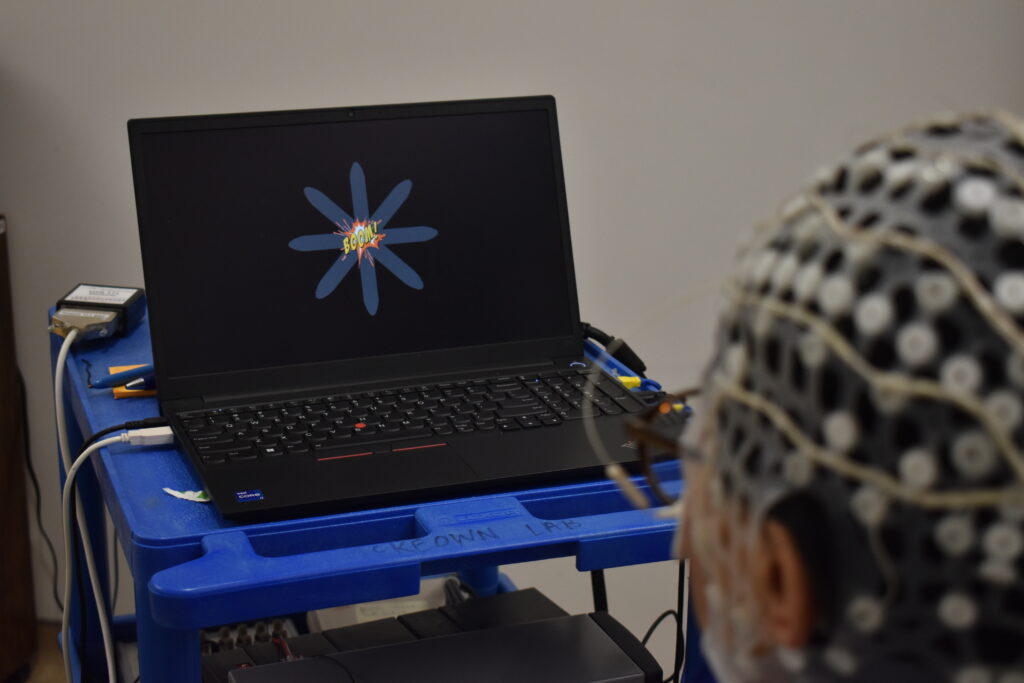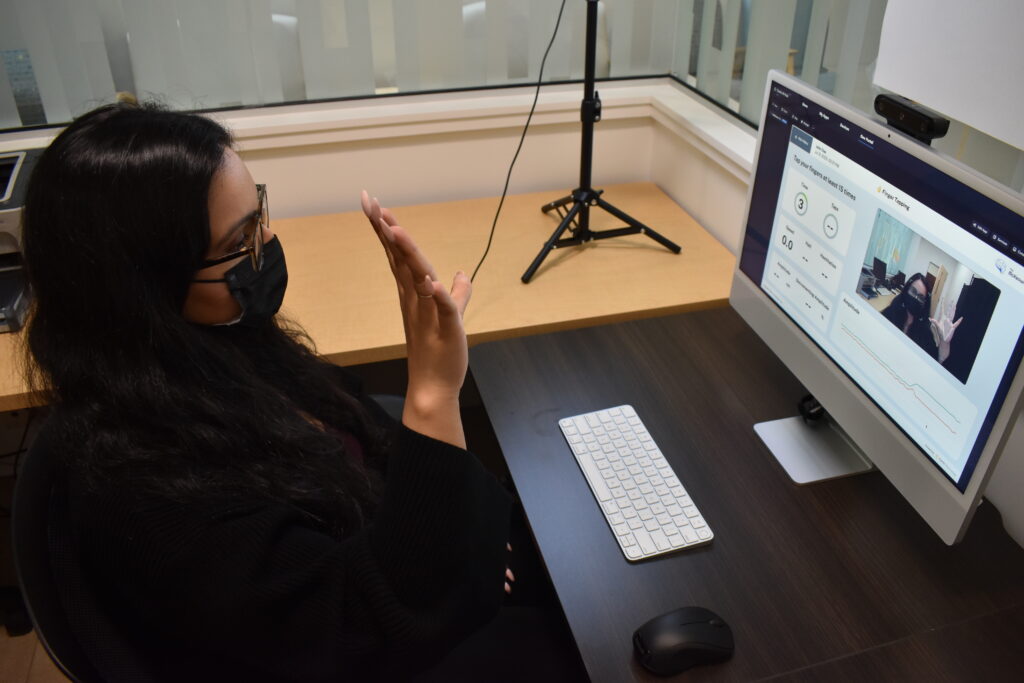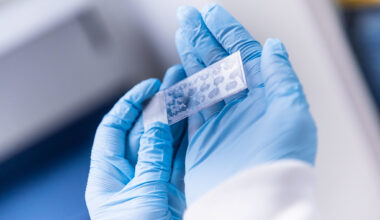Parkinson disease is a progressive neurological disorder, with many symptoms involving motor impairments, such as slowness of movement, muscle stiffness, tremor and loss of balance. Over the past few decades, there have been numerous attempts to improve the treatment of Parkinson’s and other movement disorders through various pharmaceutical approaches, but there is still currently no cure, and no medication to alter the progression of the disease.
Dr. Martin McKeown’s team at the Pacific Parkinson’s Research Centre and the Movement Disorders Clinic, located at the Djavad Mowafaghian Centre for Brain Health, are working on several novel technologies for Parkinson disease that will hopefully improve the quality and effectiveness of patient care and treatment.
Precision Stimulation study

A research participant plays a game on the computer in the Precision Stimulation study. Concurrently, the participant receives vestibular stimulation, while their brain activity is being measured via EEG.
The Precision Stimulation study uses galvanic vestibular stimulation (GVS), a non-invasive stimulation technique that sends small electrical currents to selectively target the vestibular system. The vestibular system provides a sense of balance and information about one’s body position. While prior work has demonstrated improvements in both motor and non-motor symptoms of Parkinson disease with GVS, McKeown’s team believes that by customizing the stimulation parameters to the individual, the therapy has the potential to be much more effective.
This study combines GVS with electroencephalogram (EEG) and functional magnetic resonance imaging (fMRI) recordings. The information from the EEG and fMRI are then used to custom-design GVS stimulation parameters for that individual. The team is then seeing if such a customized stimulus is significantly better than a “one-size-fits-all” stimulus during the performance of motor tasks. The success of this study would result in an inexpensive, battery-powered therapy that complements current medical treatments.
The study consists of two clinic visits where participants will be asked to complete questionnaires, undergo tests to determine their individualized optimal stimulus, and will be asked to perform motor tasks in the MRI scanner while receiving GVS with an EEG cap on.
CAMERA study

A research participant completes a finger tapping exercise as part of the CAMERA study.
Regular monitoring of body movement, mood and other disease symptoms in people with Parkinson’s is important to assess disease progression and inform treatment decisions. However, assessments of symptoms are typically only performed once a year due to economic constraints.
The aim of the CAMERA (Confidential Automatic Monitoring, Examination, and Recognition of disease Activity) study is to develop a smart camera system for in-home use that can measure body movement and mood, without the need for wearable sensors, while also preserving privacy. By using this camera system, individuals who have Parkinson disease and other diseases, like Alzheimer’s, would have the ability to evaluate how severe their illness is. This technology could also assist their healthcare providers with disease management.
“We’re very excited about this technology,” says Dr. McKeown. “What’s unique about this particular project is it’s being built from the bottom up, with close collaboration from people with Parkinson’s and their caregivers, along with technology experts and clinicians.”
A booth set up in the Movement Disorders Clinic allows participants to comfortably take part in the study by running tasks such as finger tapping, hand movement, several facial expression tasks, as well as eye tracking tasks. The video data collected from these tasks is securely stored and analyzed by engineers, in collaboration with the expertise of clinicians.
The system employs artificial intelligence (AI) algorithms to detect and classify common symptoms, including tremor, bradykinesia, hypomimia, and eye movement deficits. A “Deep Learning” procedure uses machine learning to transform and analyze the data in order to develop an anonymized, automated monitoring tool.
“We think this technology will be a game-changer,” says Dr. McKeown. “This will allow people with Parkinson’s to stay independent in their homes for as long as possible.”
Both studies are currently recruiting research participants. For more information, please contact:
Precision Stimulation study:
Martin Keung
Email: martin.keung@ubc.ca
Phone: 604-827-5145
CAMERA study:
Juana Ayala Castaneda
Email: juana.ayala@ubc.ca
Phone: 604-822-5293


